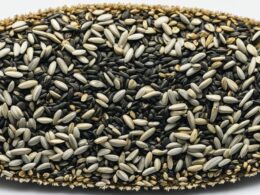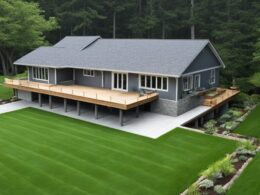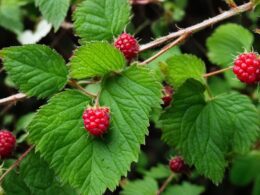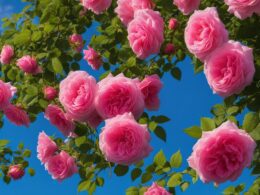Are you looking to add a touch of elegance to your garden? Consider growing a Dwarf Blue Atlas Cedar (Cedrus atlantica). With its unique drooping branches and beautiful blue needles, this evergreen tree is a stunning addition to any landscape.
Perfectly suited for gardens in USDA hardiness zones 6 to 9, the Dwarf Blue Atlas Cedar thrives in well-drained, acidic soil. Its slow-to-moderate growth rate of 1 to 2 feet per year allows it to reach a mature height of 40 to 60 feet, making it an excellent choice for smaller garden spaces.
To ensure the health and longevity of your Dwarf Blue Atlas Cedar, it is essential to provide proper care. Plant it in a location with full to partial sun, stake it until it becomes established, and water consistently during its first year. Additionally, the tree should be protected from strong winds and fertilized in the spring to promote optimal growth.
The Dwarf Blue Atlas Cedar is not only a beautiful tree, but it also offers a variety of cultivars to choose from. Whether you prefer silvery-blue, yellowish, or bluish-green needles, there is a cultivar that suits your aesthetic preferences. These variations add extra charm and diversity to your garden.
So why wait? Transform your garden into a picturesque oasis and grow a stunning Dwarf Blue Atlas Cedar today. Watch as this remarkable tree brings year-round beauty and a touch of majestic blue hues to your outdoor space.
Planting and Care Tips for Dwarf Blue Atlas Cedar
When planting a Dwarf Blue Atlas Cedar, it is important to follow these tips to ensure its successful growth and long-term health. By providing the right conditions and care, you can enjoy the beauty of this unique tree in your garden.
- Choose a location that receives full to partial sunlight to provide the optimal growing environment for the Dwarf Blue Atlas Cedar.
- Ensure the soil is well-drained and slightly acidic, as this tree thrives in these conditions.
- Stake the tree until it is fully established, typically after one full growing season. This will help support the young tree’s growth and stability.
- Water the tree consistently and deeply during the first year, especially during hot and dry weather, to promote healthy root development.
- Protect young trees from strong winds by providing a windbreak or planting in a sheltered location. This will prevent damage to the delicate branches.
- Fertilize the tree in the spring with a balanced fertilizer, following the instructions on the label. This will provide essential nutrients for healthy growth.
- Prune the Dwarf Blue Atlas Cedar in early spring, before the growing season begins. Be cautious not to remove more than a third of the tree’s total size to maintain its natural shape.
Propagation of the Dwarf Blue Atlas Cedar can be achieved by harvesting and growing seeds from dried cones. This method allows you to expand your collection of these beautiful trees and share their unique beauty with others.
Remember to provide these essential planting and care tips to ensure your Dwarf Blue Atlas Cedar thrives in your garden. With proper care, you can enjoy the stunning blue-green foliage and architectural appeal of this remarkable tree for years to come.
Will Growing a Dwarf Blue Atlas Cedar in My Garden Help Repel Bugs?
Growing a Dwarf Blue Atlas Cedar in your garden can help repel bugs due to its natural cedar bug repellent properties. The aroma of the cedar tree is a natural deterrent for insects, making it a great addition to any garden in order to keep those pesky bugs away.
The Beauty and Varieties of Dwarf Blue Atlas Cedar
The Dwarf Blue Atlas Cedar is a visually stunning tree that captivates with its striking bluish-gray needles and unique growth habit. As it matures, this majestic tree undergoes a remarkable transformation, evolving from a pyramidal shape to a flat-top tree adorned with long, horizontal branches.
There are several alluring cultivars of the Dwarf Blue Atlas Cedar, each offering its own variety in color and shape, adding to the tree’s allure. For instance, there is the ‘Argentea’ variety with its silvery-blue needles, the ‘Aurea’ variety with its enchanting yellowish needles, and the ‘Fastigiata’ variety with its captivating bluish-green needles. Other popular options include the ‘Glauca’ variety with its distinctive conical growth habit and the ‘Glauca Pendula’ variety with its graceful drooping branches and blue-green needles.
In addition to the captivating varieties, for gardeners in colder climates, there are also “false” cedars available. These alternative options, belonging to the Calocecrus, Thuja, and Chamaecyparis genera, offer similar characteristics to the Dwarf Blue Atlas Cedar, making them the perfect choice for those seeking its beauty in areas with harsher winters.
The Dwarf Blue Atlas Cedar, with its resplendent beauty and versatile varieties, serves as an exquisite addition to any garden. Complemented by its year-round greenery and the touch of majestic blue hues, this remarkable tree is sure to enhance the aesthetic appeal of your outdoor space.









